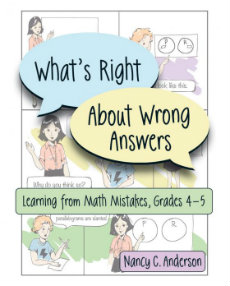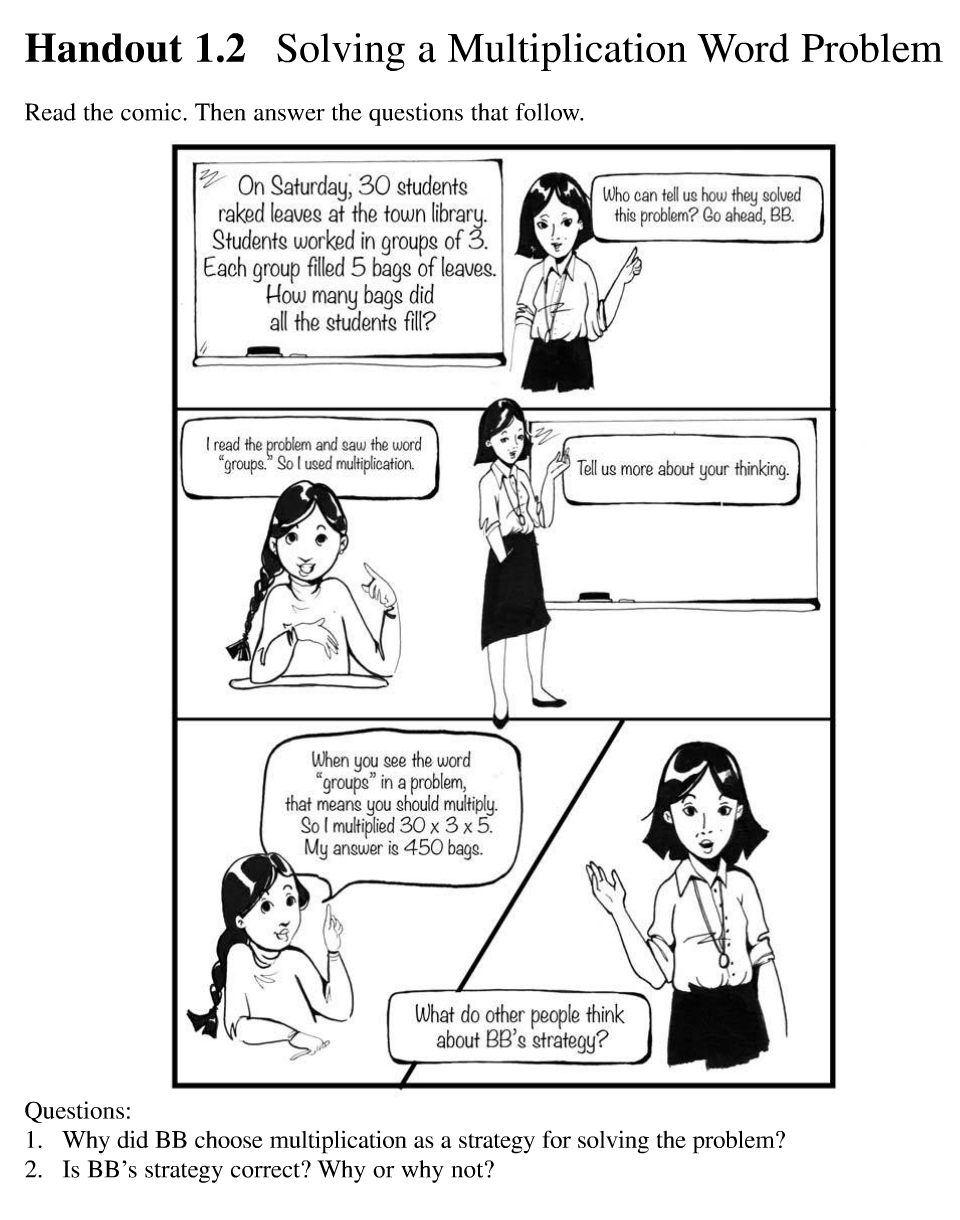Why Talk About Mistakes in Math Class?
What’s Right About Wrong Answers: Learning from Math Mistakes, Grades 4-5
By Nancy C. Anderson
(Stenhouse Publishers, 2017 – Learn more)
 Reviewed by Kimberly Mueller
Reviewed by Kimberly Mueller
What’s Right About Wrong Answers contains 22 activities – along with teacher notes that help us dig deeper into the math – to support author Nancy C. Anderson’s contention that there’s a lot students can learn from wrong answers.
Her book is well organized into four chapters covering whole-number multiplication and division, fractions, decimals, and measurement and geometry.
As the publisher’s summary notes: “By examining comic strips, letters to a fictitious math expert from confused students, and sample student work containing mistakes…learners explore typical math mistakes, reflect on why they’re wrong, and move toward deeper understanding.”
A Necessary Way to Talk about Mistakes
 In the Introduction the author addresses “Why Talk About Mistakes in Math Class?” and I think this is the best part of the book. She talks about how it is not possible to learn without making mistakes and how talking about them can change our thinking about the concept or topic, as well as our thinking about ourselves, developing a growth mindset.
In the Introduction the author addresses “Why Talk About Mistakes in Math Class?” and I think this is the best part of the book. She talks about how it is not possible to learn without making mistakes and how talking about them can change our thinking about the concept or topic, as well as our thinking about ourselves, developing a growth mindset.
Each activity includes:
- a summary of the mathematical content and highlighted error;
- Common Core connections;
- prerequisite knowledge that students need;
- required reproducibles, manipulatives, and other tools;
- the big underlying math ideas; and
- suggestions for implementing the activity.
Each activity is designed to be embedded within the study of that concept. Handouts referenced in the activities can be found at the back of the book for easy duplication.
Fostering a Growth Mindset and Respectful Conversation
I have found in my own teaching that mistakes in math are opportunities to learn, and I have been telling my students for 4+ years that I am concerned with their process to find the answer, not the final answer.
When I talk to my students about a mistake, I like to refer to them as different ways of thinking and remind them that we can change our thinking when we need to. Personally, I feel that calling them mistakes can be defeating to the student. On the other hand, discussing ways to change the thinking can help foster the growth mindset in students struggling with both content and confidence.
I have noticed as well that teaching the students how to have a respectful conversation about mistakes does take time. The book touches on possible student responses and how to guide the conversation. However, if the students are not first taught that it is okay to disagree with someone and a respectful way to do that, the discussion can quickly take a sour turn.
Posting sentence starters in my classroom such as “I understand your thinking, but I disagree with you because…” or “I am not sure how you came up with that answer; can you tell me what strategy you used” has helped my students have polite, productive conversations.
The book is aligned with Common Core standards, which we don’t use in my district, but overall, I would recommend the book for some additional activities to help foster good math discussion and analyze mistakes in the math classroom.
Education is a second career for Kimberly Mueller, and she absolutely loves it! She is a resource/inclusion teacher in Keller (TX) ISD and teaches math to 6th graders. She enjoys being an advocate for students with special needs in the school setting. Kimberly started her education career as a para-professional knowing she wanted to have her own classroom. She received a BS in Business Administration from Colorado State University-Pueblo.


































